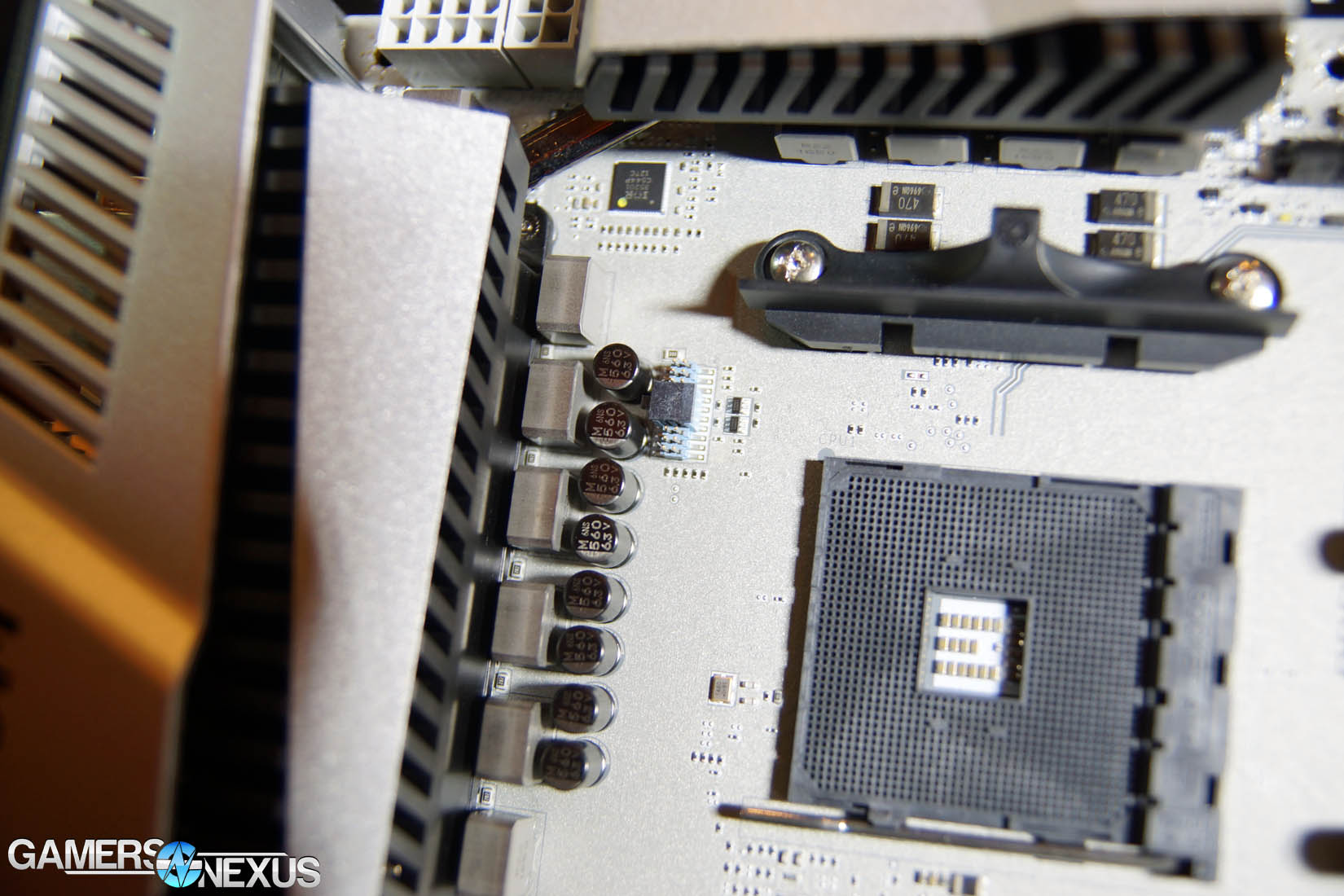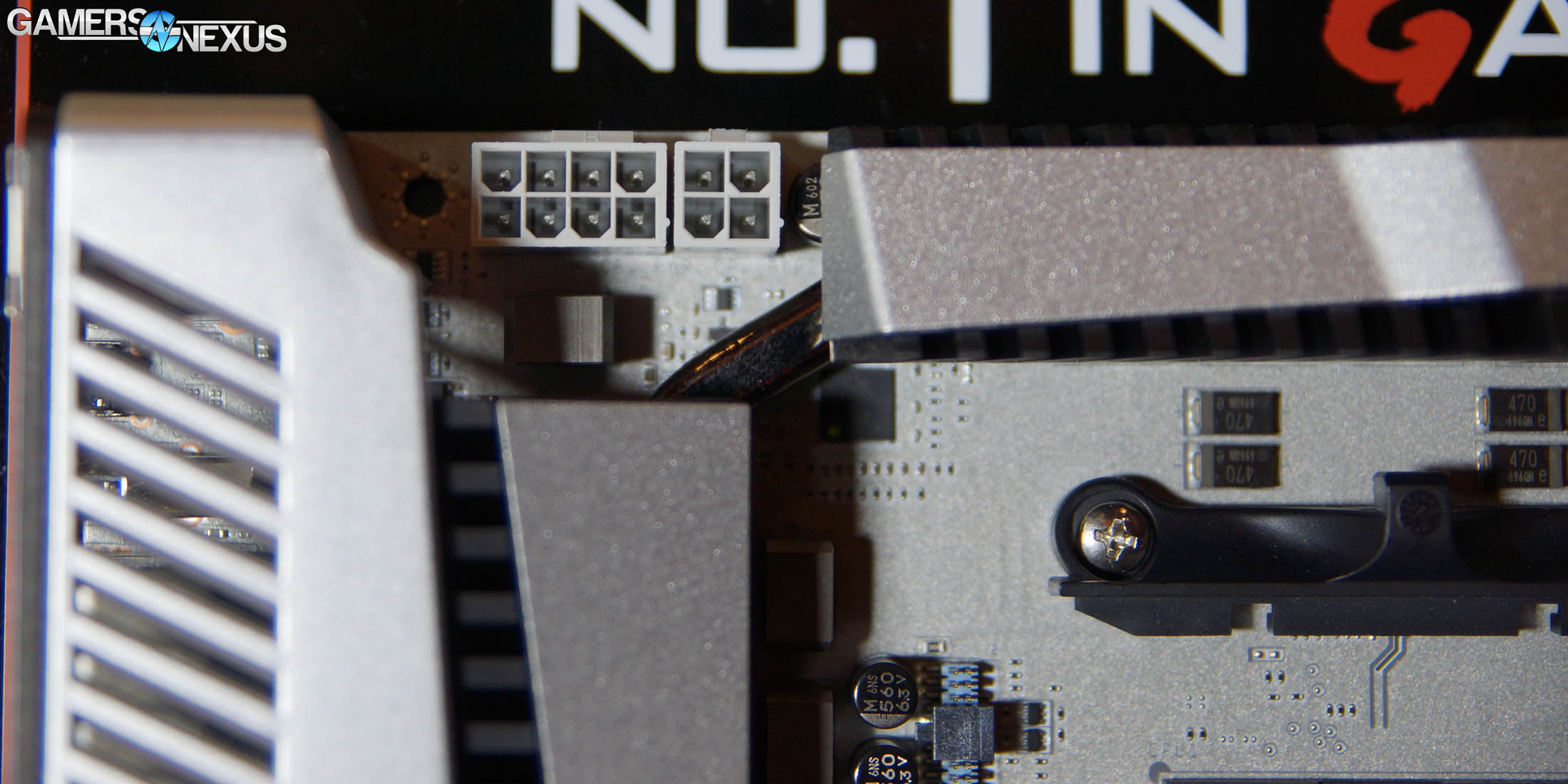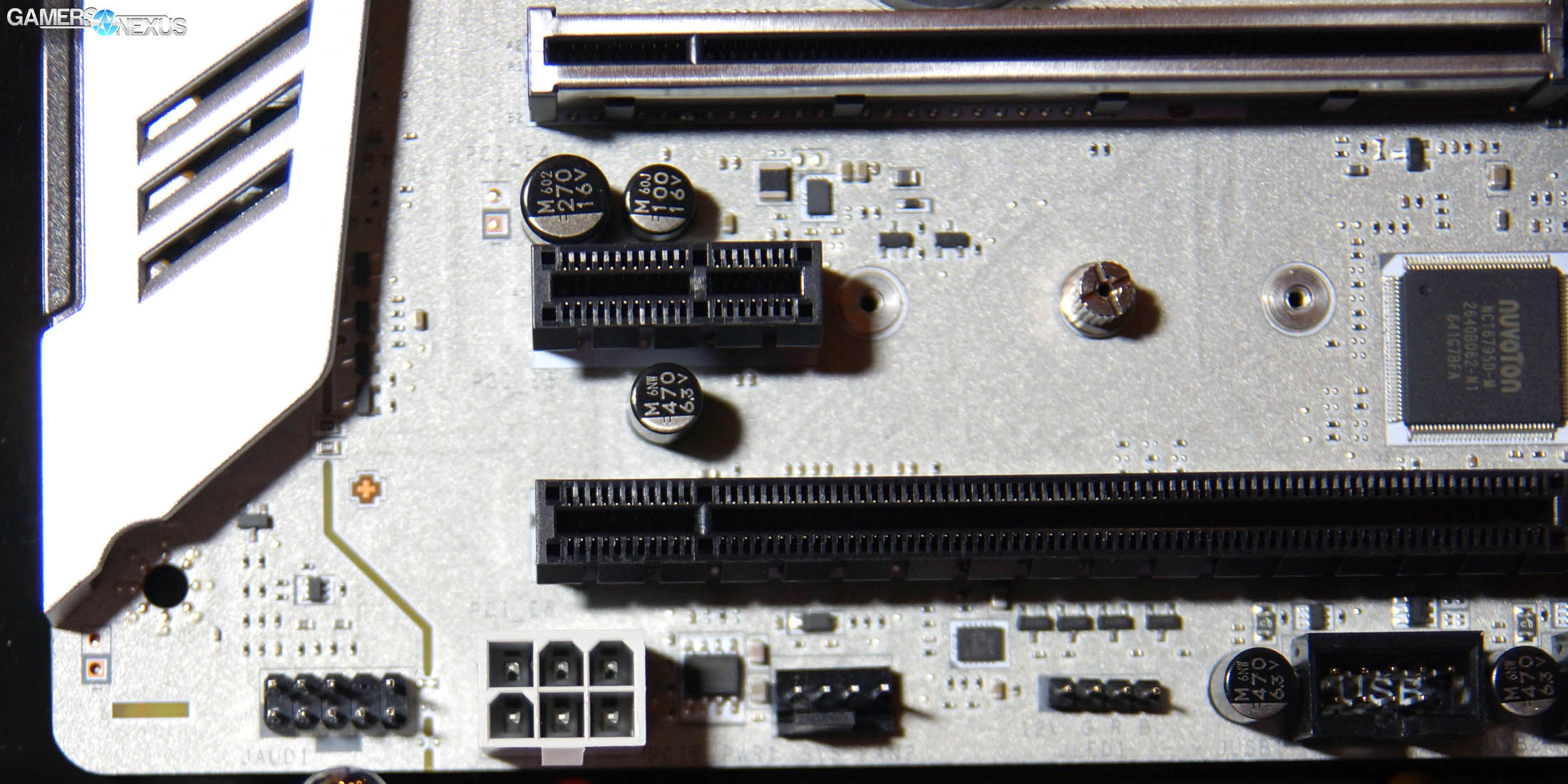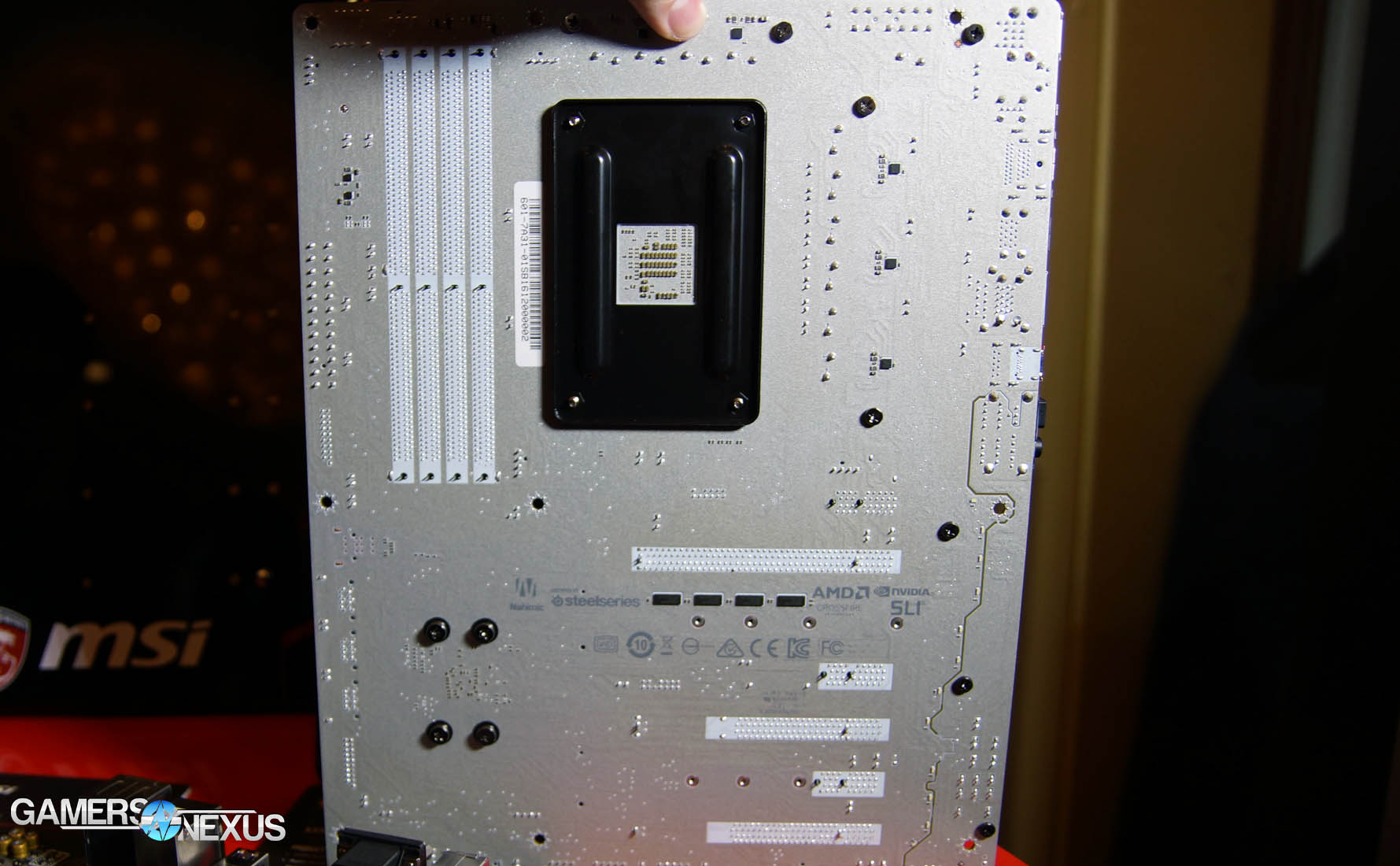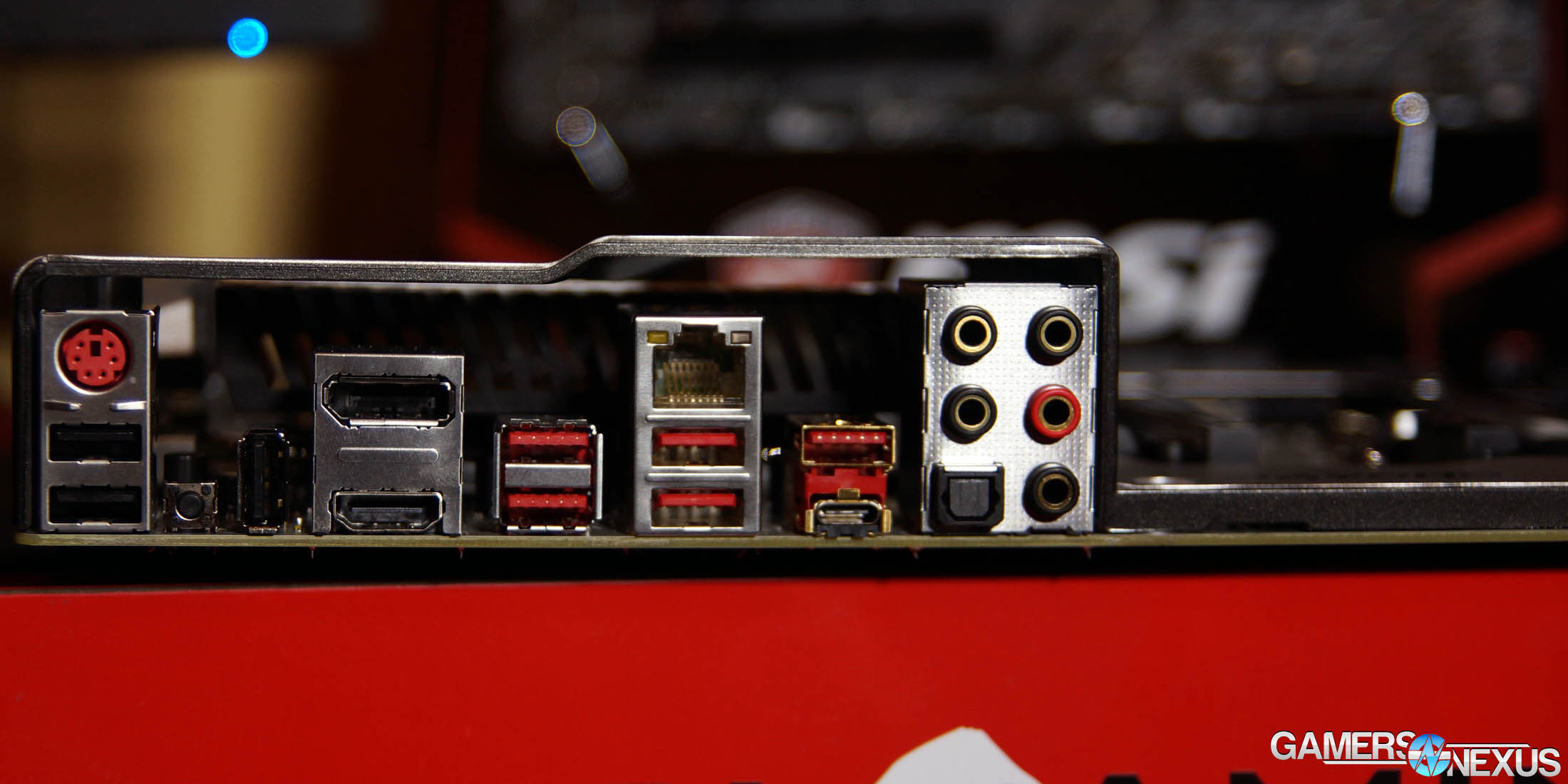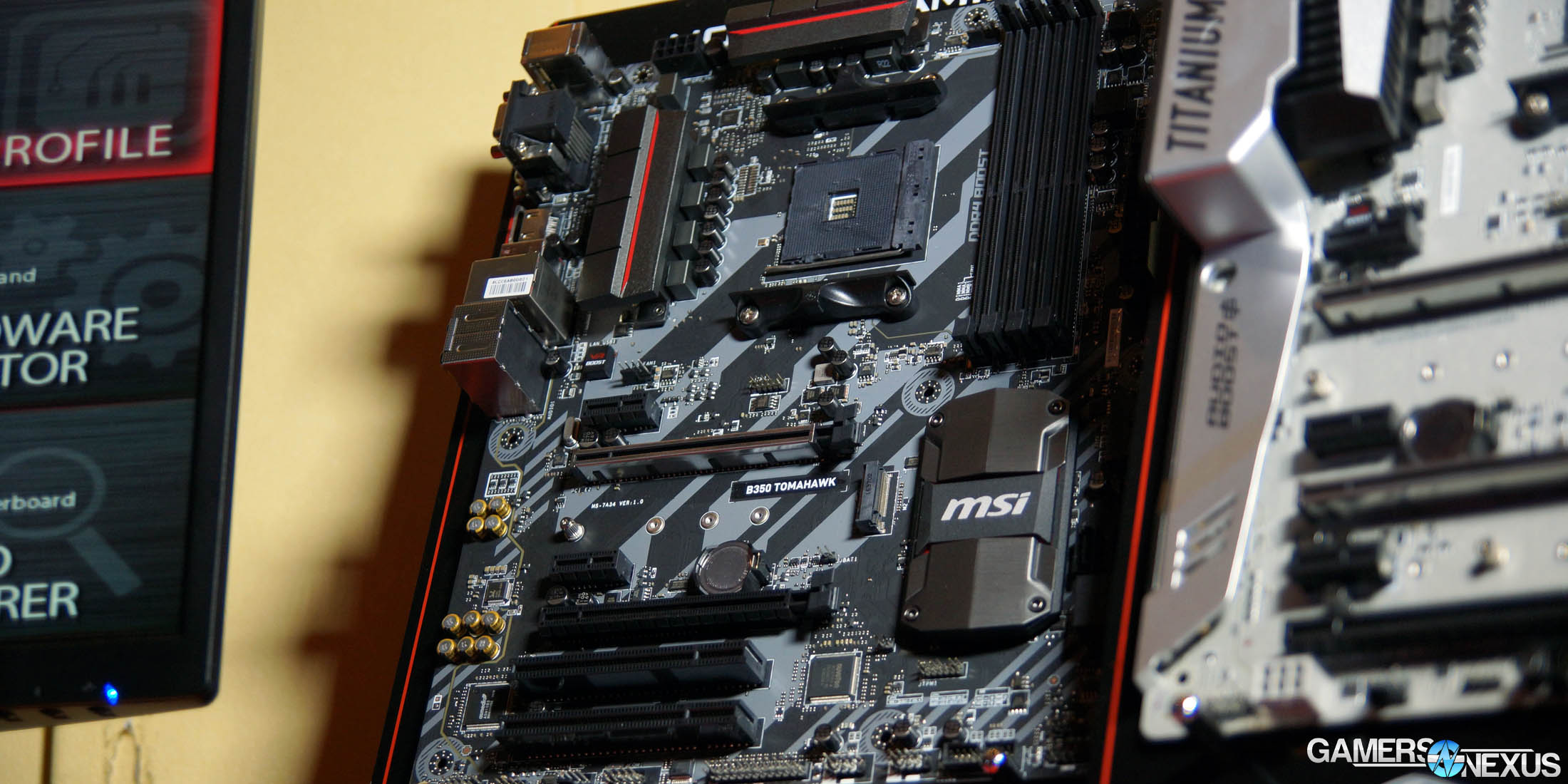Despite the general lack of official documentation on AM4, we were able to get hands-on with some early AM4 motherboards from MSI at CES 2017. This is the first time – from AMD or from others – that we’ve received any detail on the new AM4 products, and the first time they’ve been demonstrated in public. The company debuted its X370 XPOWER Titanium overclocking motherboard (For Ryzen) alongside a mid-range B350 Tomahawk board, neither yet adorned with a price. We do have a release date target, though.
During PAX Prime 2016, we posted some official documentation on lower-end AM4 chipsets that would ship to bulk buyers, for use in HP-like systems at Costco-like places. Since then, we’ve learned that the X370 platform will crown the AM4 chipset accompaniment, with B350 falling next under that, and A320 (already known, see: PAX) at the low-end. A320 would be comparable to A68, were we to draw parallels to previous generation platforms. From what MSI tells us, an X300 chipset will also exist, but is not responsible for lane assignment and I/O tasking in the same way that X370 and B350 are; instead, X300 will likely see exclusive use on SFF platforms, and will perform no substantial functions. This was also detailed in our PAX coverage.
Regardless, the two boards we’re focusing on are the X370 XPOWER Titanium and B350 Tomahawk motherboards.
MSI’s X370 XPOWER Titanium has a few hidden secrets, but the obvious stuff first: The board supports USB3.1 Gen2 Type A + Type C connectors, 2x M.2, and 4xDDR4 DIMMs. Memory is supported up to 2667MHz (and up, with bigger OCs) and is accompanied by MSI’s “DDR Boost” branding. The motherboard accepts 1 x8 + 1 x4 power connectors for CPU power, allowing for additional power provisioned for overclocking tasks. In the same vein, an additional 6-pin power header is placed south of the PCI-e slots, used for extra GPU power (and to theoretically lighten load on the PCI-e bus).
Looking at the back of the motherboard, we can see that it’s wired for the top slot to run 1 x16 PCI-e 3.0 configuration, with the next major slots operating at 2 x8. You may notice four chips located below the first PCI-e slot – those are for muxing, and allow the 1x16 lanes to become 2x8, according to MSI.
Also on the back of the board, you’ll notice additional mount points for the PCIe slots – those are for the “reinforced” version of the interface, theoretically reducing risk of ripping a slot out of the board by unscrupulous users. The memory, while it has this “armor” atop the slots, does not use its plating for physical reinforcement; instead, it’s for additional ground points to protect the RAM. That’s been done before and isn’t special, but worth note. This isn’t all that relevant to overall board quality and largely serves as a marketing checkbox.
The rear I/O includes:
- 3x USB3.1 Gen2
- 8x USB3.1 Gen1
- 7x USB2.0
- 1x HDMI (version unsure)
- 1x DisplayPort (version unsure)
- 1x PS/2
- 1x RJ45 Gigabit Ethernet
- 5x 3.5mm + SPDIF
As for the VRM, we were given two different numbers: The XPOWER Titanium is either 8+4 or 6+2, and is capable of handling over 250A on the core. The +4 (or +2, as it may be – and likely is) is for the GPU, with the 8 (or 6) being for the core VRM. We’ve followed-up with MSI to ask for more clarity on the VRM spec. Update: MSI followed-up, it's a 6+4 phase.
Tomahawk B350 Motherboard
MSI’s other on-site motherboard was the Tomahawk B350, using the mid-range chipset that falls below the X370 in the stack. The Tomahawk B350 is simpler in its feature set and doesn’t appease overclockers quite as much, though still runs the basic MSI marketing adjectives and nouns – DDR4 Boost, armor plating, all that stuff.
For I/O, the B350 Tomahawk is equipped with 8x USB3.1 Gen1 and 6x USB2.0 ports (no named USB3.1 Gen2 ports). Memory, like the X370 board, is supported up to a listed DDR4-2667MHz and up, with memory OC supported on the platform.
The board has two full-length PCI-e slots, with 2x non-Express PCI slots below that (for legacy and sound card support, we’re told, and for developing markets in Asia).
The VRM design is also simplified, with the B350 Tomahawk running a 4+2 setup for core and GPU, respectively, with the core VRM capable of about 200A throughput.
We’ll cover the chipsets and motherboards in more depth as additional information rolls out.
Both boards have a targeted release date of “end of February,” from what MSI tells us. This likely coincides with a potential Ryzen launch, though we have no official information on that from AMD or elsewhere.
Editorial: Steve “Lelldorianx” Burke
Video: Keegan “HornetSting” Gallick
